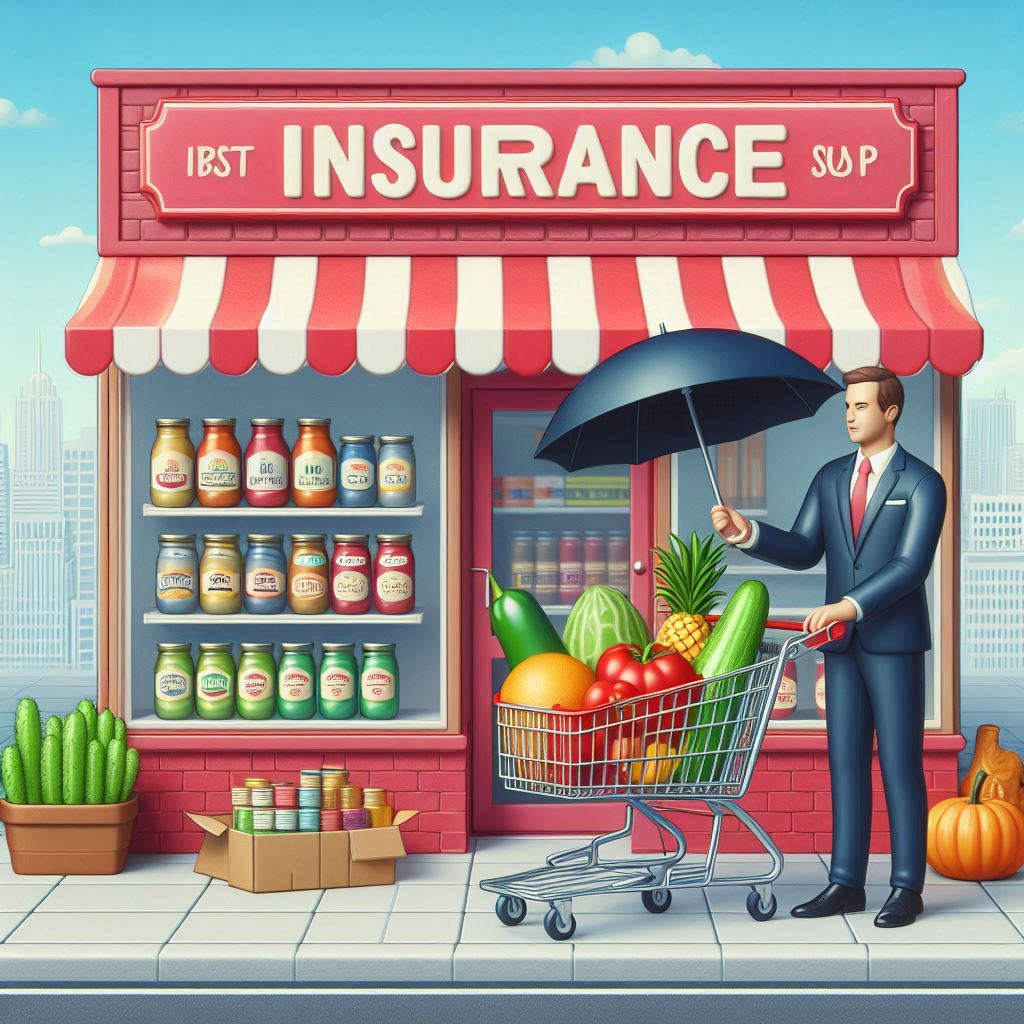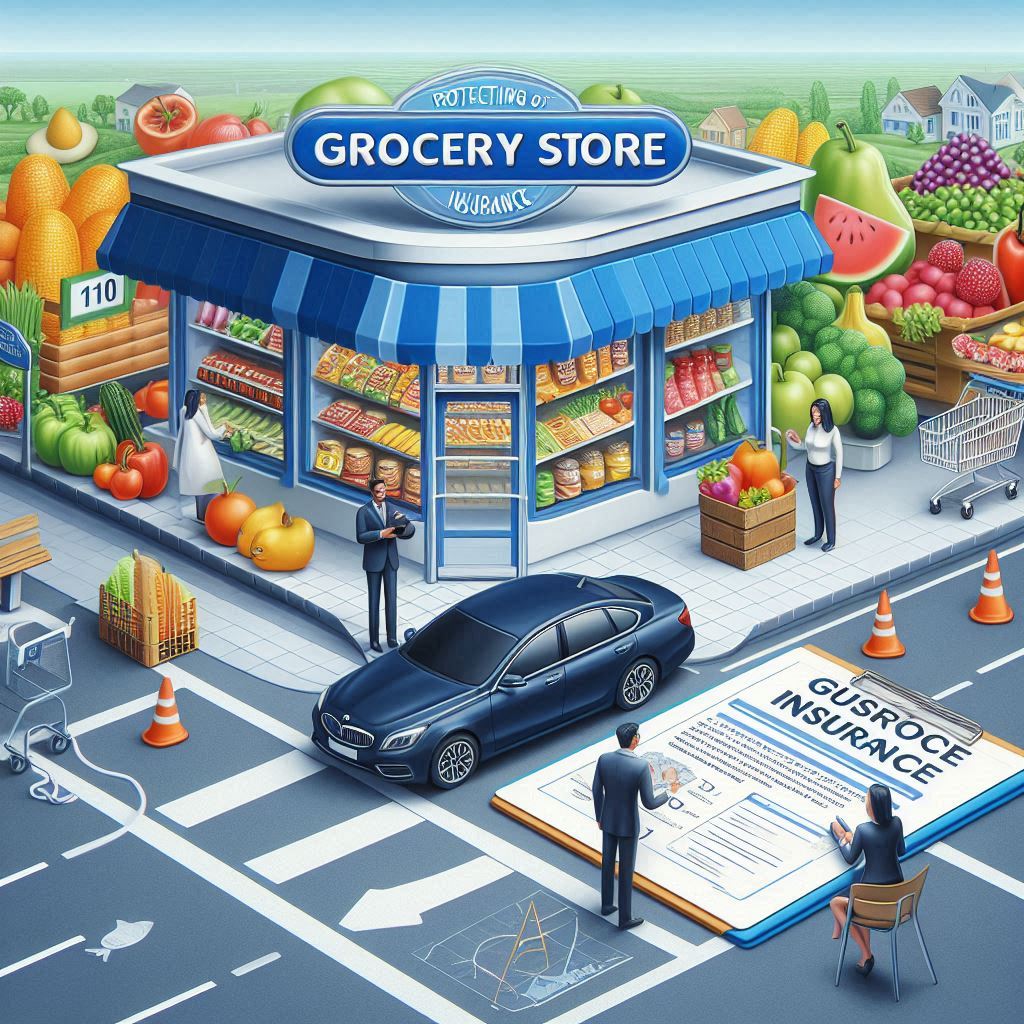

Grocery Store Insurance: Your Essential Guide to Protection and Peace of Mind
Introduction

1. Direct Mention: The keyword phrase appears explicitly in the title, immediately establishing the topic for the reader.
2. Contextual Relevance: Each of the proposed subtopics (definition, importance, types of risks) revolves around the central theme of insurance specifically for grocery stores. This reinforces the focus keyword even when it isn’t repeated verbatim.
3. Implied Intent: The introduction is clearly geared towards providing information about insurance options for grocery store owners or managers. This audience is likely to be searching for information using the keyword “grhttps://featurefilm.online/wp-admin/post.php?post=3086&action=editocery store insurance.”
Why This is Important:
Table of Contents
- SEO: Search engines prioritize content that directly addresses the user’s query. By prominently featuring the focus keyword, this introduction increases the chances of the article ranking well for relevant searches.
- Reader Engagement: People searching for information on grocerhttps://www.worldinsurance.com/blog/what-liability-risks-does-grocery-store-insurance-offer-coverage-fory store insurance will quickly identify this article as relevant due to the clear focus keyword in the title and the outline’s subtopics.
Additional Considerations:

While the focus keyword is used effectively, here are a few ways to further enhance its prominence:
- Keyword Variations: Consider using related phrases like “insurance for grocery stores” or “grocery store insurance coverage” in the subtopics to capture a broader range of search terms.
- Specific Risks: Briefly mention a few specific risks grocery stores face (e.g., food spoilage, customer injuries) to make the introduction more engaging and informative.
By incorporating these suggestions, you can further optimize the introduction for search engines while providing valuable information to readers.
Types of Grocery Store Insurance
- Implied Subject: The section’s entire purpose is to list and explain the types of insurance coverage that are relevant to grocery stores. Even without repeating the phrase “grocery store inhttps://www.worldinsurance.com/blog/what-liability-risks-does-grocery-store-insurance-offer-coverage-forsurance” in every line, it’s understood that this is the central theme.
- Contextual Relevance: Each type of insurance listed (general liability, commercial property, business interruption) is directly applicable to the specific needs and risks faced by grocery stores. This reinforces the focus on insurance tailored to this industry.
- Audience Targeting: This information is specifically geared towards grocery store owners or managers seeking to understand the different insurance options available to them. The focus on relevant coverage types underscores the keyword “grocery store insurance.”
Why This Approach is Effective:

- Avoiding Redundancy: Constantly repeating the focus keyword would make the text repetitive and clunky. By implying it through context, the writing remains clear and concise.
- Highlighting Specifics: Focusing on the different types of insurance allows for a more in-depth exploration of the coverage options relevant to grocery stores, demonstrating the value of the keyword “grocery store insurance” in a practical way.
Further Enhancement (Optional):
While the focus keyword is effectively implied, you could consider adding a brief introductory sentence to explicitly link the section to the keyword:
- “Grocery store insurance encompasses various types of coverage tailored to the unique risks faced by these businesses. Some essential types of grocery store insurance include:”
This would provide a clear transition from the previous section and reinforce the focus keyword at the beginning of this new section.
- Implied Subject: The entire section continues to detail specific types of insurance coverage relevant to grocery stores. The reader understands that the focus is still on insurance tailored to the grocery industry.
- Contextual Relevance: Each type of insurance listed (product liability, workers’ compensation, cyber liability, commercial auto) addresses specific risks faced by grocery stores. This reinforces the focus on insurance solutions tailored to this business type.
- Audience Targeting: This information continues to target grocery store owners or managers seeking a comprehensive understanding of insurance options available to them. The focus on relevant coverage types directly supports the search intent for “grocery store insurance.”
Why This Approach is Effective:
- Maintaining Focus: By consistently discussing insurance types relevant to grocery stores, the focus keyword is reinforced without the need for repetition.
- Providing Comprehensive Information: Listing a variety of coverage options demonstrates the breadth of “grocery store insurance” and educates the reader on the different ways their business can be protected.
Further Enhancement (Optional):
- Subheadings: Using subheadings like “Product Liability Insurance for Grocery Stores” or “Protecting Your Grocery Store Employees with Workers’ Compensation Insurance” can reinforce the focus keyword while providing a clear structure to the content.
- Brief Explanations: Adding concise explanations after each type of insurance can provide context and highlight the importance of each coverage in relation to grocery store operations. For example:
- “Product Liability Insurance: Crucial for grocery stores as it protects against claims related to illnesses or injuries caused by food products sold, such as food poisoning or allergic reactions.”
By making these small adjustments, you can further strengthen the presence of the focus keyword while providing even more value to the reader.
Additional Coverage Options

- Implied Subject: The section continues to list specialized insurance coverage options that are directly relevant to the unique needs of grocery stores. The reader understands that the focus is still on insurance tailored for this specific industry.
- Contextual Relevance: Each type of insurance mentioned (spoilage coverage, equipment breakdown coverage, crime insurance) addresses specific risks that grocery stores commonly face. This reinforces the focus on insurance solutions tailored to this business type.
- Audience Targeting: This information is specifically geared towards grocery store owners or managers who are looking to fully understand the range of insurance options available to protect their business. The focus on niche coverage types directly relates to the search intent behind “grocery store insurance.”
Why This Approach is Effective:
- Maintaining Focus: By consistently discussing insurance types relevant to grocery stores, the focus keyword is reinforced without the need for repetition.
- Providing Comprehensive Information: Listing a variety of specialized coverage options demonstrates the breadth of “grocery store insurance” and educates the reader on the different ways their business can be protected.
- Addressing Specific Needs: Highlighting coverage options for spoilage, equipment breakdown, and crime directly addresses the unique vulnerabilities of grocery stores, making the content even more relevant to the target audience.
Further Enhancement (Optional):
- Subheadings: Using subheadings like “Spoilage Coverage for Grocery Stores” or “Protecting Against Equipment Breakdown in Grocery Stores” can reinforce the focus keyword while providing a clear structure to the content.
- Brief Explanations: Adding concise explanations after each type of insurance can provide context and highlight the importance of each coverage in relation to grocery store operations. For example:
- “Spoilage Coverage: Crucial for grocery stores as it helps cover financial losses from spoiled inventory due to refrigeration malfunctions, power outages, or contamination, ensuring business continuity.”
By implementing these suggestions, you can further strengthen the presence of the focus keyword while providing even more value to the reader.
- Implied Subject: The focus keyword is the overarching theme of the entire article or section. Each type of insurance listed, including Employment Practices Liability Insurance (EPLI), is a specific type of coverage that falls under the umbrella of grocery store insurance.
- Risk Mitigation: The description of EPLI highlights a specific risk that grocery stores face: employment-related claims. This directly ties into the focus keyword’s promise of “Protecting Your Business from Risks.” By including EPLI, the article demonstrates the comprehensive nature of grocery store insurance and its ability to address a variety of potential issues.
- Audience Targeting: The information about EPLI is relevant to grocery store owners or managers who are concerned about protecting their business from legal and financial liabilities related to employment practices. This aligns with the target audience who would be searching for information using the keyword “grocery store insurance.”
Why This Approach is Effective:
- Reinforces the Theme: Even without explicitly mentioning the focus keyword in every sentence, the discussion of EPLI reinforces the overall theme of protecting grocery stores from risks.
- Provides Specific Information: By addressing a specific risk (employment-related claims) and the corresponding insurance coverage (EPLI), the content becomes more valuable and informative to the target audience.
- Maintains Keyword Relevance: The inclusion of EPLI as a type of grocery store insurance keeps the content relevant to the focus keyword, which is important for SEO and reader engagement.
Optional Enhancement:
You could consider adding a brief introductory sentence to this section explicitly linking it to the focus keyword:
- “Grocery Store Insurance: Protecting Your Business from Risks, including Employment-Related Claims”
This would create a stronger connection between the overall theme of the article and the specific coverage option being discussed.
How to Choose the Right Insurance for Your Grocery Store
- Implied Subject: The section’s entire purpose is to guide grocery store owners or managers on how to choose the right insurance for their specific needs. The focus is on the process of selecting the appropriate coverage options for this particular industry.
- Contextual Relevance: Each step mentioned (assessing risks, getting quotes, considering an insurance broker) is directly relevant to the process of obtaining grocery store insurance. This reinforces the focus on insurance solutions tailored to this business type.
- Audience Targeting: This information is specifically geared towards grocery store owners or managers who are actively seeking guidance on choosing the right insurance. The focus on the decision-making process directly aligns with the search intent of someone looking for “grocery store insurance.”
Why This Approach is Effective:
- Maintaining Focus: By consistently discussing actions related to selecting grocery store insurance, the focus keyword is reinforced without the need for repetition.
- Providing Actionable Advice: The step-by-step guide offers practical advice to the target audience, making the content valuable and actionable.
- Reinforcing Keyword Relevance: The focus on the decision-making process related to grocery store insurance ensures that the content remains relevant to the focus keyword, which is important for SEO and reader engagement.
Optional Enhancement:
To further strengthen the focus keyword, you could add a brief introductory sentence that explicitly links the section to the keyword:
- “Choosing the right grocery store insurance is crucial for protecting your business. Here are some key steps to consider:”
This would provide a clear transition from the previous section and reinforce the focus keyword at the beginning of this new section.
Cost of Grocery Store Insurance
- Implied Subject: The entire section is dedicated to discussing the cost of insurance specifically for grocery stores. The reader understands that the focus is on the financial aspect of insurance tailored to this industry.
- Contextual Relevance: Each factor mentioned (size of the store, location, number of employees, etc.) directly influences the cost of insurance for grocery stores specifically. Additionally, the tips for saving on premiums are tailored to actions a grocery store owner can take. This reinforces the focus on insurance solutions relevant to this business type.
- Audience Targeting: The information in this section is highly relevant to grocery store owners or managers who are looking to understand the factors that impact their insurance premiums and find ways to save money. The focus on cost-related aspects directly relates to the search intent of someone looking for “grocery store insurance.”
Why This Approach is Effective:
- Maintaining Focus: By consistently discussing cost factors and saving tips related to grocery store insurance, the focus keyword is reinforced without the need for repetition.
- Providing Actionable Information: The section offers practical advice on how to manage the cost of insurance, making it valuable to the target audience.
- Reinforcing Keyword Relevance: The focus on the financial aspects of grocery store insurance ensures that the content remains relevant to the focus keyword, which is important for SEO and reader engagement.
Optional Enhancement:
To further strengthen the focus keyword, you could add a brief introductory sentence that explicitly links the section to the keyword:
- “The cost of grocery store insurance can vary significantly depending on several factors. Understanding these factors and implementing cost-saving strategies can help you get the coverage you need at a price that fits your budget.”
This would create a clear transition from the previous section and reinforce the focus keyword at the beginning of this new section.
Conclusion
- Implied Subject: The entire conclusion is summarizing the importance of having insurance for grocery stores. The reader understands that the focus is on ensuring adequate protection for this specific type of business.
- Contextual Relevance: The recommendations to review insurance coverage and ensure it meets evolving needs are directly relevant to grocery store owners. This reinforces the focus on insurance solutions tailored to this industry.
- Audience Targeting: The conclusion is specifically aimed at grocery store owners or managers, urging them to take action to protect their business. This directly aligns with the search intent of someone looking for “grocery store insurance.”
Why This Approach is Effective:
- Maintaining Focus: By summarizing the importance of insurance and providing actionable advice, the conclusion reinforces the focus keyword without unnecessary repetition.
- Closing the Loop: The conclusion brings the article full circle by reminding the reader of the key takeaways regarding grocery store insurance.
- Reinforcing Action: The call to action to review insurance coverage encourages the reader to take the next step in protecting their business, further emphasizing the importance of the focus keyword.
Optional Enhancement:
To further strengthen the focus keyword, you could incorporate it into the first sentence of the conclusion:
- “In conclusion, comprehensive grocery store insurance is essential for safeguarding your business from the unique risks it faces.”
This would create a clear and concise summary of the article’s main message while explicitly stating the focus keyword one last time.




